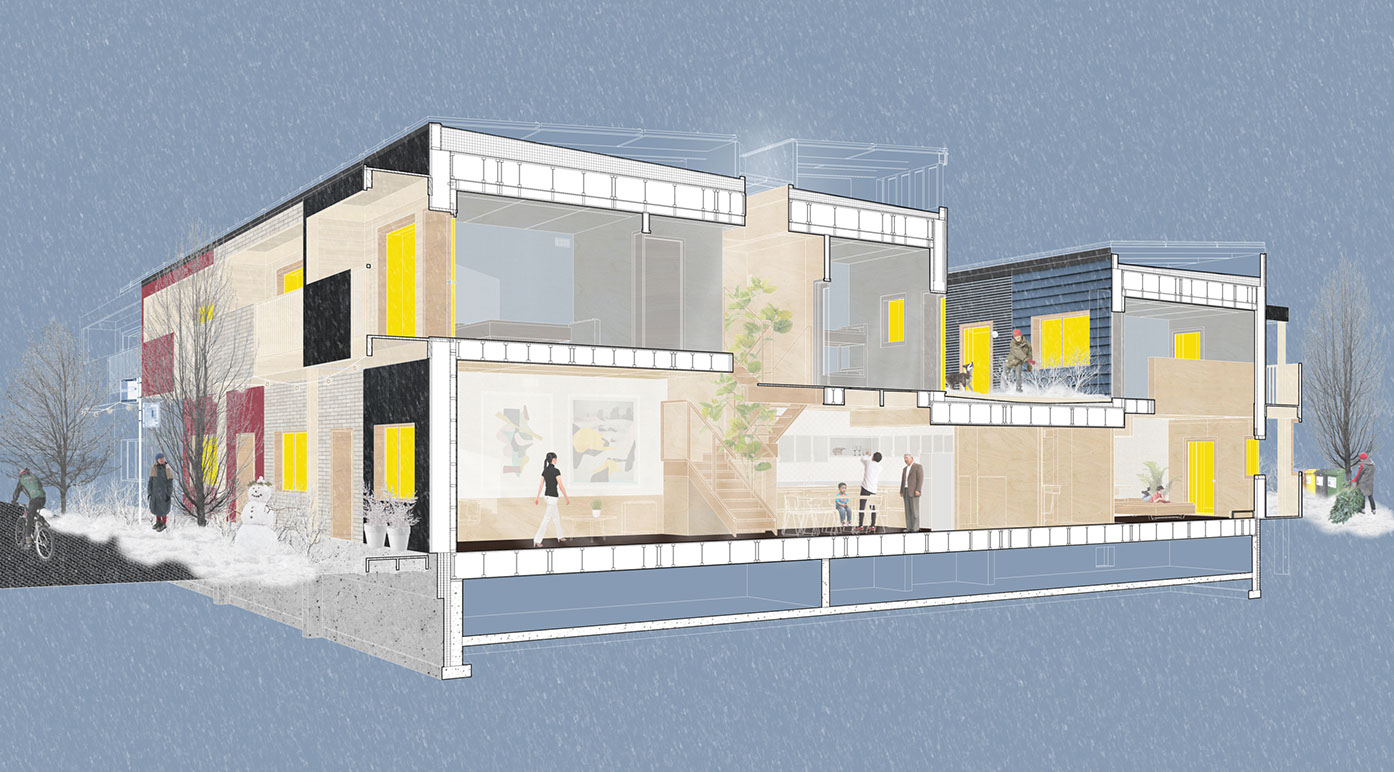Project Description

When I joined the Topological Media Lab, two artists were working on installations that would be integrated into the Deep-Performance Dwelling, a net-zero energy house design to be presented at the Solar Decathlon contest in China in summer 2018.
The contest required the projects should showcase certain modes—party, movie night, vacations, etc. Each team and artist was working independently on their project, and changing those modes required direct access to the computer running the project.
In order to simplify their customization, I suggested that I create a controller interface with options and triggers. This interface was to be placed in the room where the electrical panel and the HVAC controls would also be located.
User Experience
Problem to Solve
Artists created their media art installation software independently. However, each of their software needed to be set to certain modes—party, movie night, vacations, etc.—at the same time.
During the development of their software, each artist could access their installation physically via keyboard or screen, but once the installation was to be presented, each installation would be embedded in the house walls and ceilings, with no physical access possible.
Investigation
The first thing to do was to explore what software was used by the artists: Max, PureData, and VVVV. All of these software are made to communicate with other tools and software easily via OSC.
The house was designed and constructed as per specifications of the designers and artists collaborating on the project, which provided flexibility when exploring for potential solutions.
Budget was not high, but it was not impossible to consider custom hardware and software.
Solution
The best solution in this case was to create a custom server which would send triggers to the artists' software when a mode would need to be changed.
Additionally, a small user interface was developed for a touch screen, so that interacting with the server did not require a keyboard, or even any technical knowledge about the installation software. This touch screen was placed in what was dubbed the mechanical room, where the electrical panel and the HVAC controls would also be located.
Development
I developed a Node.js API which would send OSC messages to the artists' Max applications. I also developed a GUI in HTML/CSS which would use that API. Those applications were installed on a Raspberry Pi, which would run an NGINX server and the API webservices. The Pi boots all those services automatically.
Credits
- Full-Stack: Mat Janson Blanchet
- Liquid Light: Nima Navab
- Passing Light: Naoto Hiéda
- Deep-Performance Dwelling: TeamMTL
All copyrights, products, and artworks belong to their respective owners.
Role
UX Research, Graphic Design, Development
Context
While conducting research-creation at the Topological Media Lab
Circa
2018
Project Link
- http://www.teammtl.ca/dpd.html